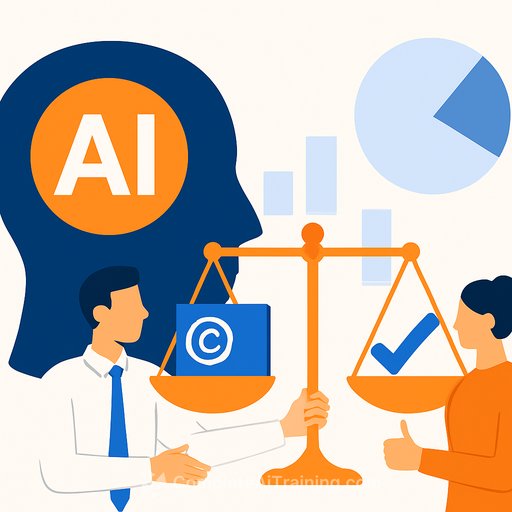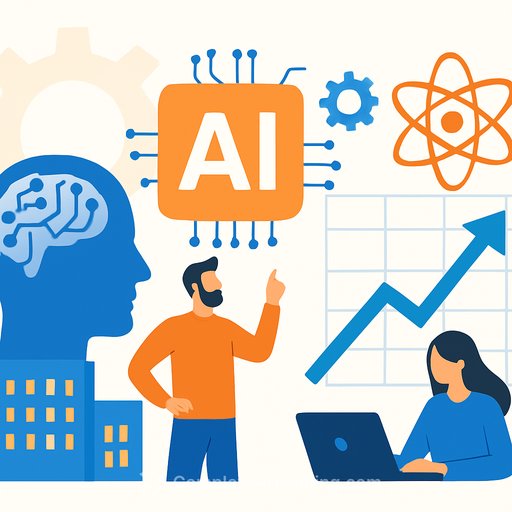AI Music Labels Are Coming. Here's How Creatives Can Win on Transparency
Earlier this year, The Velvet Sundown racked up a million monthly listeners with retro-pop tracks. None of it was made by a traditional band. Every song, image, and the backstory came from generative AI. The reveal ignited a simple question for fans and artists: where's the line between creative experimentation and misleading the audience?
In September 2025, Spotify said it will support a new industry standard for AI disclosures in music credits developed through DDEX. It also committed to tougher enforcement against impersonation and new spam controls - a push to make streaming more trustworthy for artists, rights-holders, and listeners. That's the signal: AI isn't being banned. It's being labeled.
Why this matters for creatives
Disclosure will move from nice-to-have to expected. Credits will need to show how AI contributed - vocals, instrumentation, lyric drafting, mixing, mastering, visuals, and more. This isn't a roadblock. It's a chance to control your narrative and keep fans on your side.
Platforms are already reacting. Apple Music pulled "Heart on My Sleeve" for AI-cloned vocals. SubmitHub asks artists to declare if AI played a major role and offers an "AI Song Checker." Spotify's approach adds clarity: disclose, don't hide.
What an AI label should communicate
- Vocals: Human, cloned voice (with consent), or fully synthetic.
- Lyrics and composition: AI-drafted ideas vs. final human-written edits.
- Instrumentation and sound design: AI-generated stems, samples, or instruments.
- Production: AI use in arrangement, mixing, or mastering.
- Visuals: AI-generated cover art, artist photos, or promo assets.
- Tools and models (high level): Name the tools used without sharing your secret sauce.
- Consent: Written permission for any likeness or voice cloning.
- Human contributors: Who performed, produced, and approved the final cut.
Expect platforms to ask for structured metadata. If it's easy to see, fans can choose what to support - and you avoid confusion or backlash later.
Build your disclosure workflow now
- Map your process: List where AI shows up across writing, production, and visuals.
- Keep receipts: Save prompts, versions, seeds, tool names, and dates for each track.
- Get consent in writing: For any voice model, likeness, or collaborator inputs.
- Embed credits at export: Fill metadata fields consistently so distributors don't guess.
- Publish a fan-facing note: 30-60 words on how AI helped, linked from your artist profile.
- Standardize: Create a credits template your team uses on every release.
Design a label fans will actually read
- Simple icon + one-liner: "AI-assisted: vocals and mix." Tap to expand for details.
- Consistent placement: Under the track title, in the credits drawer, and on your About section.
- Plain language: Avoid jargon. Tell people what was human, what was algorithmic, and why.
Ethics, rights, and money
A study commissioned by the International Confederation of Societies of Authors and Composers warned that Gen AI outputs could put 24% of music creators' revenues at risk by 2028. That's a real threat in a streaming economy already under pressure.
- Protect your IP: Don't upload stems you don't own to third-party tools. Read tool licenses.
- Voice and likeness: Use consent agreements. No celebrity cloning. Clear your samples.
- Deals and training: If a label or partner licenses your catalog to train models, negotiate compensation and credit.
- Diversify income: Direct-to-fan drops, memberships, live sets, stems/sample packs, and custom commissions.
Distribution reality check
AI doesn't excuse spam. Platforms are investing in detection and enforcement. Disclose clearly, pitch honestly, and your music stands out while low-quality uploads get filtered.
Your 7-day action plan
- Audit three recent tracks and write a 50-word AI disclosure for each.
- Create a shared credits template with AI fields for your team.
- Add a short AI note to your artist bio and EPK.
- Collect consent forms for any voice or likeness work.
- Update distributor metadata before your next release.
- Pitch curators with proactive transparency to build trust.
- Prepare a press paragraph explaining your creative process - human first, AI as an instrument.
Platform shift: what to watch
As DDEX rolls out the AI credit standard and platforms align, expect more prominent labels on track pages and artist profiles. Start early and your catalog will be clean, consistent, and future-proof.
Spotify's announcement is a clear nudge in that direction. Details will likely flow through distributor portals and credit forms as standards settle. Track it here: Spotify Newsroom and DDEX.
Bottom line
AI is part of modern music. Transparency earns trust, cleans up credits, and gives fans real choice. Creatives who disclose clearly will keep control of their story - and their audience.
If you want practical training on AI workflows, ethics, and creative production, explore curated courses by role: Complete AI Training - Courses by Job.
Your membership also unlocks:






